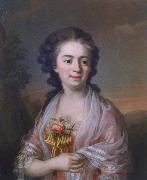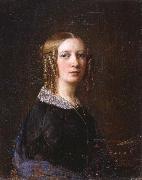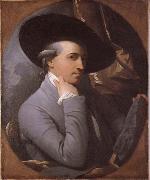
Oil On
Canvas, Real Flavor of Old Masters
|
unknow artist
|
|||
|
|
|||
|
|
|||
|
|
Sjalvportratt new18/unknow artist-659479.jpg Painting ID:: 48854 Visit European Gallery |
mk187 Millings as receptionsstycke. presumably in closed of 1770- digits Oil slick pa screen 69x55cm | |
Height Width |
INS/CM |
||
|
X |
|
||
|
|
|||
|
Sophie Adlersparre
|
|||
|
|
|||
| Swedish, 1808-1862 | |||
|
|
|||
|
|
Sjalvportratt new18/Sophie Adlersparre-257879.jpg Painting ID:: 48886 Visit European Gallery |
mk187 1849 Oil slick pa screen 25x19.5cm | |
Height Width |
INS/CM |
||
|
X |
|
||
|
|
|||
|
Albrecht Durer
|
|||
|
|
|||
| b.May 21, 1471, Imperial Free City of Nernberg [Germany] d.April 6, 1528, Nernberg Albrecht Durer (May 21, 1471 ?C April 6, 1528) was a German painter, printmaker and theorist from Nuremberg. His still-famous works include the Apocalypse woodcuts, Knight, Death, and the Devil (1513), Saint Jerome in his Study (1514) and Melencolia I (1514), which has been the subject of extensive analysis and interpretation. His watercolours mark him as one of the first European landscape artists, while his ambitious woodcuts revolutionized the potential of that medium. D??rer introduction of classical motifs into Northern art, through his knowledge of Italian artists and German humanists, have secured his reputation as one of the most important figures of the Northern Renaissance. This is reinforced by his theoretical treatise which involve principles of mathematics, perspective and ideal proportions. His prints established his reputation across Europe when he was still in his twenties, and he has been conventionally regarded as the greatest artist of the Renaissance in Northern Europe ever since. | |||
|
|
|||
|
|
Sjalvportratt new19/Albrecht Durer-575548.jpg Painting ID:: 53757 Visit European Gallery |
mk234 1498 40x52cm | |
Height Width |
INS/CM |
||
|
X |
|
||
|
|
|||
|
Benjamin West
|
|||
|
|
|||
| 1738-1820 Benjamin West Locations Benjamin West RA (October 10, 1738 ?C March 11, 1820) was an Anglo-American painter of historical scenes around and after the time of the American War of Independence. He was the second president of the Royal Academy serving from 1792 to 1805 and 1806 to 1820. In 1760, sponsored by Smith and William Allen, reputed to be the wealthiest man in Philadelphia, West traveled to Italy where he expanded his repertoire by copying the works of Italian painters such as Titian and Raphael. As painted by Gilbert Stuart, 1783-84West was a close friend of Benjamin Franklin, whose portrait he painted. Franklin was also the godfather of West's second son, Benjamin. In 1763, West moved to England, where he was commissioned by King George III to create portraits of members of the royal family. The king himself was twice painted by him. He painted his most famous, and possibly most influential painting, The Death of General Wolfe, in 1770, exhibited at the Royal Academy in 1771. Although originally snubbed by Sir Joshua Reynolds, the famous portrait painter and President of the Royal Academy, and others as over ambitious, the painting became one of the most frequently reproduced images of the period. In 1772, King George appointed him historical painter to the court at an annual fee of £1,000. With Reynolds, West founded the Royal Academy of Arts in 1768. He was the second president of the Royal Academy from 1792 to 1805. He was re-elected in 1806 and was president until his death in 1820. He was Surveyor of the King's Pictures from 1791 until his death. Many American artists studied under him in London, including Charles Willson Peale, Rembrandt Peale, Gilbert Stuart, John Trumbull, and Thomas Sully. [3] West is known for his large scale history paintings, which use expressive figures, colours and compositional schemes to help the spectator to identify with the scene represented. West called this "epic representation". He died in London. | |||
|
|
|||
|
|
Sjalvportratt new19/Benjamin West-262932.jpg Painting ID:: 53851 Visit European Gallery |
mk234 about 1770 77x64cm | |
Height Width |
INS/CM |
||
|
X |
|
||
|
|
|||










